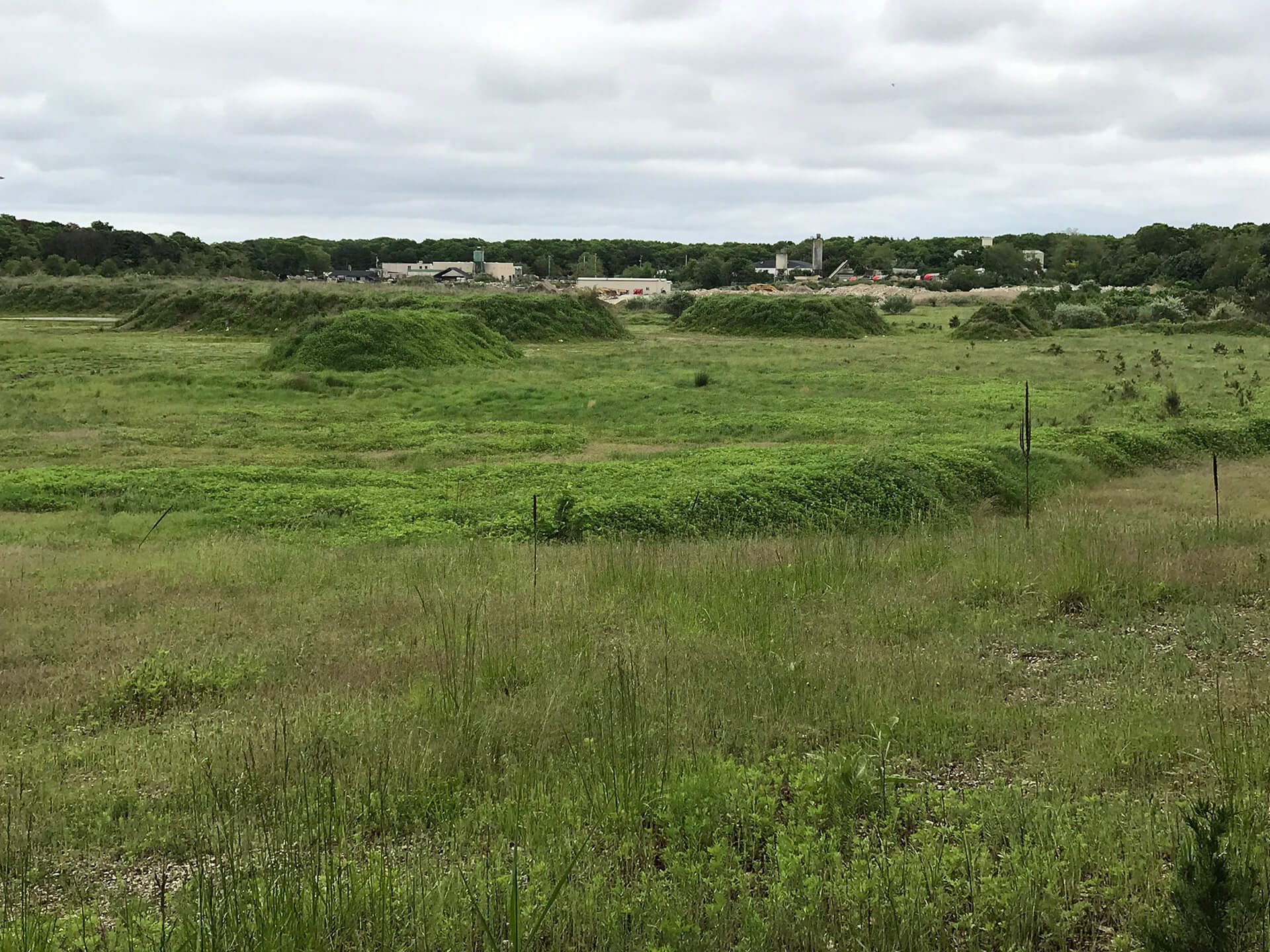Wainscott Industrial Park Planned

A proposal to subdivide most of the 70.5-acre gravel pit in Wainscott into 50 buildable lots, all zoned for commercial-industrial use, is in its beginning stages, according to the plans for the project on file with the East Hampton Town Planning Department.
The gravel or sand pit, owned by John Tintle, lies just north of Old Montauk Highway, south of the Long Island Rail Road tracks, east of Wainscott Northwest Road, and west of Hedges Lane. Most of the newly created lots, according to the survey on file, would be slightly smaller than one acre in size.
The two largest lots in the proposal are to the south of the parcel, near the highway. A newly created lot, at the southeast corner of the current property, would be six acres in size. The other, at the southwest corner, would be slightly larger than four acres. Those two lots currently have industrial structures on them, most of which would remain.
The plan calls for a 75-foot wide buffer zone bordering both the Hedges Lane side of the project and the Wainscott Northwest Road side. The complex would be entered by a roadway at its southeastern corner and from Georgica Drive at the southwestern corner. The newly created lots are to be laid out in four rows, running south to north, with a fifth row of lots running west to east along the railroad tracks.
The interior lots would be accessed by two roadways running the extent of the proposed subdivision, south to north.
The plan appears to fly in the face of the town’s ongoing Wainscott hamlet study. In the illustration of the map for the master plan included with that study, where Tintle sees 40,000-square-foot industrial lots, the town sees a “community center, ball fields, playground, and multiuse path” that will “provide for the needs of residents, workers, and visitors throughout the village.”
The survey also depicts a parking lot and a cluster of affordable housing. “Affordable housing can be incorporated into the village in the form of townhouses or apartments designed to the local tradition of the rambling shingle style,” the survey noted.
“The gravel pit,” the hamlet study reports, “represents the largest single property in the area, and, because of its size and location, will have an oversize influence on the future of Wainscott. Under current commercial-industrial zoning, the pit could be subdivided into dozens of smaller lots and turned into an office or industrial park . . . Current zoning and other regulations could allow in excess of 500,000 square feet of new buildings on the site.”
David Eagan, vice president, Wainscott Commercial Center LLC, wrote in a letter to the East Hampton Town Planning Board, “It is clear that the reclaimed sand pit presents the town and the East Hampton community with one of their last opportunities to meet both current and future demand for small useable (commercial) lots. Lots are clearly needed to house both current and future construction, [and] service commercial, wholesale, and warehouse businesses that comprise and service the town’s dominant construction, tourism, and second homeowners economy.”
The town, Eagan points out, has an option if it wants to create the park land depicted in the hamlet study’s survey. He wrote, “If so inclined, the town could purchase any number of lots intended for use as a public park as suggested in the conceptual framework included in the draft Wainscott report. WCC is open to working with the town on any such open space purchases, although frankly questions the general public support for a large ‘public park . . .’”
The East Hampton Town Planning Department is in the process of preparing a memo on the proposal for the planning board.
tom.e@indyeastend.com



